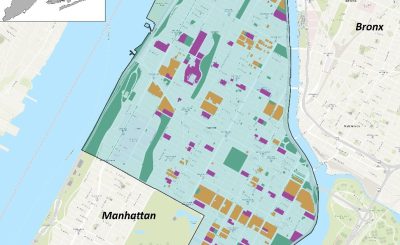
By Kayla Guacci
As interest in sustainability grows, buying second-hand has taken on a new trendy status. Trying to score “vintage†items has become a favorite pastime among many young people.
The movement that has become thrifting started in the mid-2010s by millennials (those born from 1981 to 1996) and has been picked up and embraced by a new generation known as Gen Z (those born between the years 1997 and 2012).
As more and more young people learn about the damaging environmental effects of “fast fashion†– which produces trendy clothes as quickly and cheaply as possible– many have chosen what they think are more sustainable and affordable options such as thrift stores. Members of Gen Z have adopted second-hand shopping faster than any other group according to Thred Up, an online second-hand clothing store.
The rise in concern among young people about shopping fast fashion is valid. Fashion is the world’s second-largest polluter next to the oil industry.
According to the 2018 Pulse of the Fashion industry’s report, “Seventy-five percent of the fashion supply chain, the material ends up in landfills. This amounts to ‘the equivalent of one garbage truck of textiles per second.’â€
Many critics argue that, though well-intentioned, thrift shopping may hurt more than it helps, however.
As people move away from fast fashion, they may be unknowingly gentrifying second-hand stores in the process. Traditionally, these stores cater to the needs of underserved or low-income people and communities. The trendy increase in second-hand shopping has led to the creation of online thrift stores. One popular store called “Depop†allows users to buy and sell from the comfort of their home. Depop and its sellers have faced much criticism for allowing users to upsell thrifted items for obscene prices by labeling them as “vintage†or “rareâ€.
One Depop reseller expressed disappointment in his fellow sellers. “It’s really messed up what they’re doing,†said Sebastien, aged 22. “I saw on TikTok someone was exposed for selling a Walmart bag at a high price and lying that it was a vintage piece. I understand we live in a capitalist society but that’s just wrong.â€
On the video streaming site Youtube there are countless videos of influences and users “thrift flipping,†which is the process of taking thrifted items and reinventing them. This has arguably made thrifting more trendy for upper-class viewers who otherwise wouldn’t consider buying second hand.
At one local thrift store in Huntington, New York a group of girls talked a little about why they shop second-hand.
“Everyone at my school dresses the same because they shop at all the same places. When I shop at the mall, I always end up buying something someone else has,†said Haley, aged 19.
Molly, aged 20, points to environmental factors and the high price of substantial clothing brands as her reason for thrifting.
“I’ve been attempting to live a somewhat sustainable lifestyle in the last year… the first thing anyone tells you whose been on this journey is to stop buying from stores like Forever 21 that sell fast fashion and start thrifting. I’ve tried very hard to find stores that sell affordable stainable clothing, but it has been difficult, so I buy second hand.â€
Shopping sustainably is significantly more expensive than buying from a fast fashion retail store. For comparison, a white tee shirt for women runs $14.99 at fast-fashion retailer J Crew whereas at sustainable retailer American Giant the same style tee shirt runs for $48.00.
Sunny Willams, founder of sustainable brand House of Sunny, told Harpers Bazaar in an interview why sustainable fashion is so expensive. “There are more stages involved and a system that’s a little bit more layered than a fast-fashion prototype. Sustainable production is a better craft and the pieces will have longer life spans… It’s the reality of time and effort that results in extra costs and stages. The fabrics are more costly due to low-impact dyes being more expensive, for example, and we cannot overlook poor finishing, raw edges, or low-quality fabrics that won’t stand a couple of washes, just to bring down that price point to sell it in volumeâ€.
A solution to the issue of fast fashion and to combat the high prices of sustainable fashion maybe “slow fashion†which according to Study Ny an online sustainable store is “the movement of designing, creating, and buying garments for quality and longevity. It encourages slower production schedules, fair wages, lower carbon footprints, and (ideally) zero wasteâ€. Many prospective sustainable shoppers are members of the middle and upper class who cannot afford regularly to pay the high prices that sustainable brands charge – leading them back to thrift stores. This contributes to the increase in foot traffic that eventually leads to an increase in item prices in thrift stores. We must find better ways to bring sustainable brands to the public that don’t drain the pockets of shoppers.







